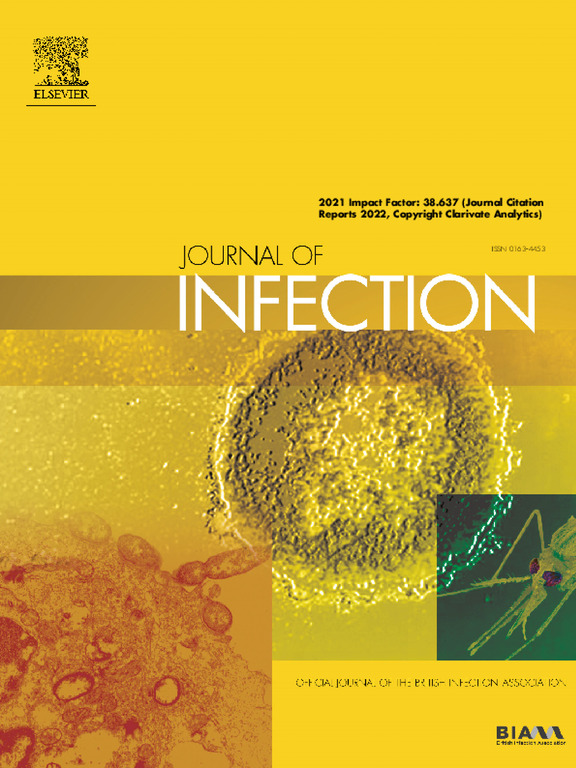Initial antigen encounter determines robust T-cell immunity against SARS-CoV-2 BA.2.86 variant three years later
IF 14.3
1区 医学
Q1 INFECTIOUS DISEASES
引用次数: 0
Abstract
Objectives
We aimed to evaluate the adaptive immune responses cross-recognition of the hypermutated SARS-CoV-2 BA.2.86 variant and identify the determinants influencing this recognition.
Methods
We measured BA.2.86 neutralizing antibodies and T-cell responses cross-reactivity in previously exposed participants. We investigated clinical-demographic factors and used a novel in silico analysis to assess viral genetic determinants affecting T-cell responses.
Results
Despite notable escape from neutralizing antibodies, T-cell responses remained generally preserved, albeit with a significant but small loss in T-cell cross-recognition (7.5%, 14.2%, and 10.8% average loss for IFN-γ, IL-2, and IFN-γ + IL-2, respectively, p<0.05). This is consistent with the prediction of 6 out of 10 immunodominant T-cell epitopes (TCEs) altered by BA.2.86 mutations to have reduced peptide presentation. This effect is expected to be mitigated by total TCEs across the genome. Remarkably, T-cell responses and cross-recognition were 3.5 (IFN-γ), 2 (IL-2) and 2.4 (IFN-γ + IL-2) times higher when first induced by infection rather than by vaccination three years earlier, by increasing number of infections, and by ancestral/Delta than Omicron infections.
Conclusions
Our findings underscore the critical role and factors influencing T-cell immunity against evolving SARS-CoV-2 variants, such as first antigen encounter (vaccination or infection), as it is essential for developing effective control strategies.
初始抗原相遇决定了三年后对SARS-CoV-2 BA.2.86变体的强大t细胞免疫。
目的:评价适应性免疫应答对超突变SARS-CoV-2 BA.2.86变体的交叉识别,并确定影响这种识别的决定因素。方法:我们测量了BA.2.86中和抗体和t细胞反应的交叉反应性。我们调查了临床人口学因素,并使用了一种新颖的计算机分析来评估影响t细胞反应的病毒遗传决定因素。结果:尽管中和抗体明显逃逸,但t细胞反应总体上保持不变,尽管t细胞交叉识别显著但较小的损失(IFN-γ、IL-2和IFN-γ + IL-2的平均损失分别为7.5%、14.2%和10.8%)。我们的研究结果强调了t细胞免疫对不断演变的SARS-CoV-2变体的关键作用和影响因素,例如首次抗原接触(疫苗接种或感染),因为它对于制定有效的控制策略至关重要。
本文章由计算机程序翻译,如有差异,请以英文原文为准。
求助全文
约1分钟内获得全文
求助全文
来源期刊

Journal of Infection
医学-传染病学
CiteScore
45.90
自引率
3.20%
发文量
475
审稿时长
16 days
期刊介绍:
The Journal of Infection publishes original papers on all aspects of infection - clinical, microbiological and epidemiological. The Journal seeks to bring together knowledge from all specialties involved in infection research and clinical practice, and present the best work in the ever-changing field of infection.
Each issue brings you Editorials that describe current or controversial topics of interest, high quality Reviews to keep you in touch with the latest developments in specific fields of interest, an Epidemiology section reporting studies in the hospital and the general community, and a lively correspondence section.
 求助内容:
求助内容: 应助结果提醒方式:
应助结果提醒方式:


